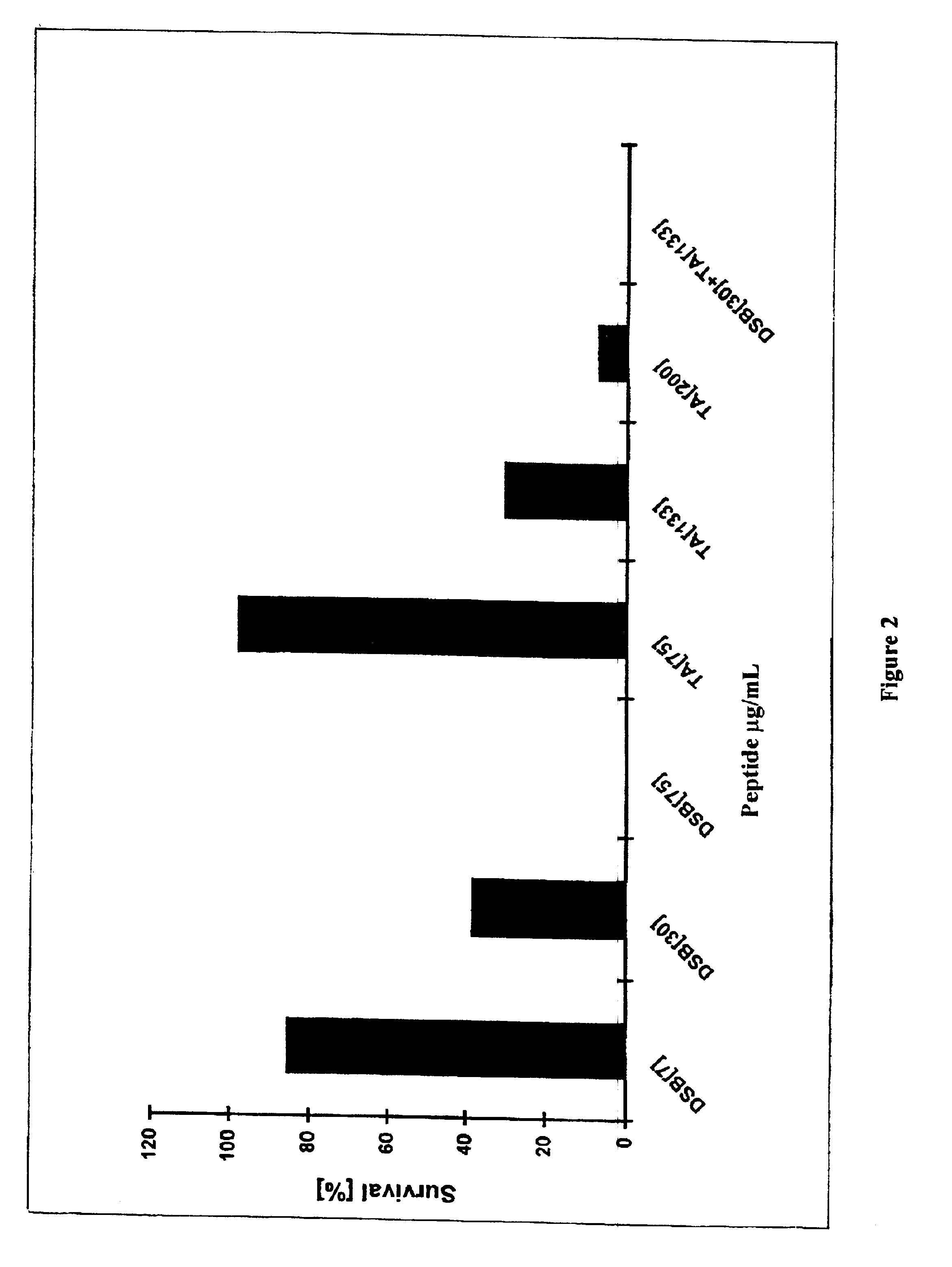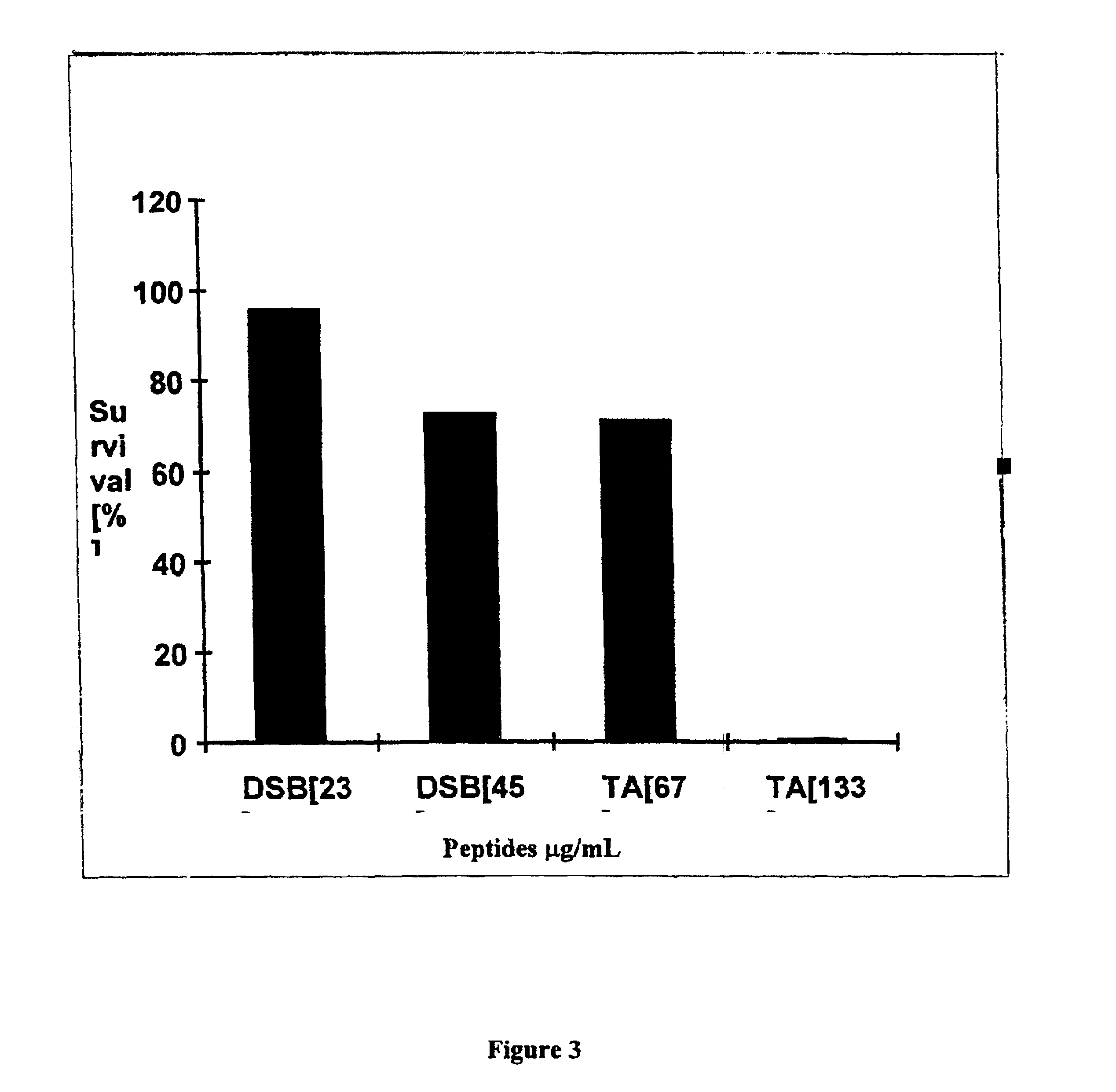Transgenic plants expressing dermaseptin peptides providing broad spectrum resistance to pathogens
- Summary
- Abstract
- Description
- Claims
- Application Information
AI Technical Summary
Benefits of technology
Problems solved by technology
Method used
Image
Examples
Embodiment Construction
1. Selection and Creation of Nucleic Acid Sequences Encoding the Dermaseptin and the Temporin Peptides
a. Dermaseptin Coding Sequence
A nucleic acid molecule was designed to encode the mature 27 amino acid form of dermaseptin b (SEQ ID: 3) with a 5 amino acid N-terminal extension sequence, MAMWK (amino acids 1-5 of SEQ ID NO: 28). This nucleic acid construct was designated MSRA.sub.2 and was synthesized using four overlapping oligonucleotides in a single PCR reaction. The oligonucleotides used are shown in Table 2. The first two oligonucleotides (oligo #1 and oligo #2) contained the nucleic acid sequences encoding the N-terminal and the C-terminal portions of the peptide, respectively. These oligonucleotides were used in the PCR reaction at a 20 nM concentration. The second two oligonucleotides contained sequences recognized by various restriction enzymes. Specifically, oligo #3 contained restriction sites for XbaI, KpnI and NcoI, and oligo #4 contained restriction site for SstI, PstI...
PUM
| Property | Measurement | Unit |
|---|---|---|
| Fraction | aaaaa | aaaaa |
| Fraction | aaaaa | aaaaa |
| Length | aaaaa | aaaaa |
Abstract
Description
Claims
Application Information
 Login to View More
Login to View More - R&D
- Intellectual Property
- Life Sciences
- Materials
- Tech Scout
- Unparalleled Data Quality
- Higher Quality Content
- 60% Fewer Hallucinations
Browse by: Latest US Patents, China's latest patents, Technical Efficacy Thesaurus, Application Domain, Technology Topic, Popular Technical Reports.
© 2025 PatSnap. All rights reserved.Legal|Privacy policy|Modern Slavery Act Transparency Statement|Sitemap|About US| Contact US: help@patsnap.com



